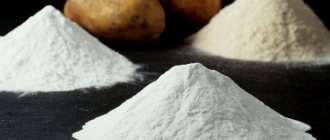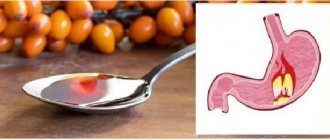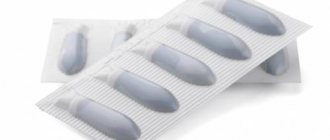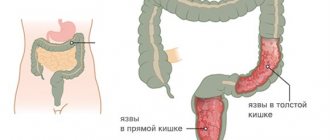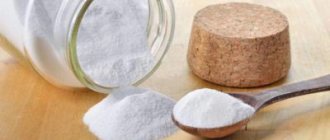Gastritis of the antrum of the stomach is a disease related to a type of chronic inflammatory process localized in the antrum of the stomach, hence the name.
The antrum of the body of the stomach performs the function of reducing the acidity of digested food before excreting it into the duodenum. An additional function is peristaltic. Contraction of smooth muscle moves the bolus of food from the stomach to the small intestine. The developing inflammatory process leads to the formation of foci of atrophy on the mucous membrane and disruption of digestive functions. Antral gastritis often develops into focal superficial and atrophic.
Organ structure
Antral superficial gastritis - what is it?
Before answering this question, let's learn a little about the structure of the stomach.
This body consists of several departments, each of which performs certain functions:
- lower esophageal sphincter;
- fundus of the stomach;
- cardiac department;
- body of the stomach;
- antrum;
- gatekeeper;
- DPK.
Gastritis of the body of the stomach and antrum is an inflammatory process that occurs in these mucous membranes. What's so special about it?
Description of the disease
The antrum performs important functions in the digestive system. It produces the necessary mucus to protect the stomach walls and also propels the bolus towards the intestines. Due to the inflammatory process in this area, disturbances in the digestion of food occur, which is accompanied by unpleasant pain.
How does antral superficial gastritis begin? The harmful Helicobacter pylori microbe enters the gastrointestinal tract, where, thanks to the acidic environment, it begins to multiply. The cells of the organ are damaged by pathogens, which, in turn, disrupts the functionality of the entire department. In this case, almost no protective mucus is produced and the activity of the stomach slows down.
As can be seen from the pathogenesis of antral superficial gastritis, the culprit of the disease is a harmful bacterium. What else can trigger the disease?
Symptoms
In the early stages of the disease, pathological changes are mild, so there are no symptoms characteristic of gastritis. Over time, the inflammatory process spreads, and the following signs appear:
- pain in the middle part of the abdomen (intensifies at night, most often subsides after eating);
- a feeling of heaviness in the stomach (appears when eating large amounts of fatty foods);
- attacks of nausea, often ending with vomiting;
- the appearance of a thick light coating on the tongue, dry mouth;
- a constant feeling of fullness in the stomach (typical of the later stages of the disease);
- increased intestinal motility, accompanied by loose stools;
- spasms and convulsions of the gastric walls, accompanied by cramping pain;
- difficulty moving food through the lower parts of the digestive system;
- cardiopalmus;
- pain in the left side (associated with inflammation of the pancreas accompanying gastritis);
- decreased appetite, aversion to food;
- general weakness;
- increased gas formation, bloating;
- heartburn, sour belching;
- chronic constipation;
- bad breath associated with stagnation and rotting food in the stomach;
- increased body temperature (observed during exacerbation of antral gastritis);
- drowsiness and feeling of fatigue that occurs after eating food.
Severe forms of the disease are accompanied by the development of gastric bleeding. In this case, bloody vomiting, pale skin, rapid heartbeat, and a drop in blood pressure are observed.
Diagnosis of the disease
Based on the patient’s complaints and general examination, the doctor refers the patient to a biochemical blood test, which will reveal internal inflammatory processes.
If a general analysis confirms inflammation, other diagnostic methods will be prescribed. Unfortunately, painless technologies such as ultrasound and x-rays are ineffective and uninformative in this situation.
Therefore, gastroscopy is considered the most effective means of examination, which helps specialists examine the gastric mucosa and determine the cause of the disease.
Patients often associate gastroscopy with unpleasant and painful sensations. However, modern methods of conducting this research greatly facilitate the painful procedure.
An endoscope, a long tube with a diameter of up to one centimeter, no longer causes as many unbearable and painful sensations as before. Moreover, thanks to new methods of anesthesia (sprayed onto the root of the tongue), all negative manifestations are eliminated, including the gag reflex, lack of air, etc.
On the recommendation of a specialist, the probe can be inserted through the nose or during sleep (under general anesthesia).
Sometimes during a gastroscopy, the doctor takes a small part of the mucous membrane for a biopsy.
Another method for diagnosing antral superficial gastritis is a breath test to detect Helicobacter pylori bacteria. Before the test, the patient drinks a certain reagent solution, and thirty minutes later breathes into a tube to determine the result.
So, the diagnosis has been carried out and the disease has been identified. What could be the final diagnosis?
Diagnostics
Gastritis of the antrum is diagnosed using a number of medical measures:
- general blood and urine tests;
- blood serum analysis to detect markers of atrophic gastritis and gastrin levels;
- breath test and blood and stool test to determine the number of Helicobacter pylari;
- fibrogastroscopy (FEGDS);
- X-ray of the stomach;
- mucosal biopsy;
- Ultrasound examination of the abdominal organs.
At the discretion of the attending physician, other additional studies are prescribed.

FGDS of the stomach
Classification of the disease
Antral gastritis is usually systematized into:
- erosive (characterized by erosive formations and scars, leads to severe damage to the mucous membrane, is the most dangerous type of antral disease);
- hyperplastic (caused by an increase in the mucous membrane, accompanied by the appearance of cysts and polypoid tumors);
- atrophic (can provoke a cancerous condition);
- antral focal gastritis (manifests itself in the inflammatory process of several zones of the gastric mucosa simultaneously);
- catarrhal (accompanied by damage to the mucous membrane of the lower stomach).
Depending on the identified type of illness, high-quality and individual treatment is prescribed.
Pharmacological treatment of the disease
With regard to drug treatment of antral disease, including focal antral superficial gastritis, the following principles of therapy are applied:
- Getting rid of bacteria. For this purpose, semi-synthetic penicillin antibiotics are used – “Amoxil” or “Amoxiclav”.
- Reducing and regulating acidity. Such drugs as Omez, De-Nol, Ranitidine, Pantoprazole, etc. help with this.
- Neutralization of hydrochloric acid, relief of heartburn, removal of bile acids. To do this, use means of an enveloping effect - “Almagel”, “Maalox”, “Phospholugel”, “Reni”, etc.
- Anesthesia of symptoms: “No-Shpa”, “Atropine”, “Drotaverine” and the like.
- Replenishment of essential nutrients - vitamins and minerals. For this purpose, injections of B vitamins, ascorbic, folic or nicotinic acid are used.
To treat antral gastritis, it is necessary to carry out complex therapy, that is, use all of the above remedies together. The attending physician will write out an individual schedule for the patient to take medications, calculating the dose of each of them separately. This will make the treatment most effective and appropriate for the individual patient.
Are there other methods to combat superficial antral gastritis? Yes, and this is, first of all, a diet.
Prevention of antral atrophic gastritis
Since this disease most often appears on the basis of a milder form of gastritis, for example, superficial gastritis, its prevention comes down to preventing the appearance of this form. If the diagnosis of atrophic antral gastritis has already been made, it is necessary to prevent its exacerbation. The set of preventive measures includes:
- compliance with the diet and a gentle diet;
- healthy lifestyle with feasible physical activity;
- rejection of bad habits;
- Regular (at least once a year) visits to a gastroenterologist and fibrogastroscopy.
Follow these recommendations and stay healthy!
Nutrition for illness
Proper nutrition during illness will make drug therapy even more productive and effective. Moreover, a dietary diet will help not only get rid of gastritis, but also prevent it. So remember, what you choose when you look in the refrigerator will affect your well-being and recovery.
What does diet therapy include?
First of all, this is a refusal of fatty, fried, smoked, spicy, sweet, salty, sour, as well as spices, alcohol, citrus fruits, coffee and other products.
You should only eat fresh foods and foods at room temperature. They should be prepared by steaming or in the oven, or you can boil them. Portions should be small, but you need to eat often (every 2-3 hours). Dinner should be no later than 6-7 pm.
When eating properly for gastritis, it is important to pay attention to how much fluid the patient consumes. Its amount should be at least two liters per day. It can be still water, compote or even sweet tea.
In addition to medications and diet therapy, proven traditional medicine recipes can be used to treat gastritis.
Causes
1. The main factor in the development of antral gastritis is considered to be infection by a bacterium, but its sedimentation is likely only when favorable conditions are formed, which can be caused by lifestyle, underlying diseases and nutrition. The main predecessors are:
- rough and poor quality food;
- alcohol abuse;
- too spicy food;
- some medications are often salicylates, hormones and sulfonamides;
- smoking;
- carbonated drinks;
- excess salts;
- toxic elements in hazardous work.
2. Another important factor in the onset of the disease is concomitant diseases, which include:
- anemia;
- pulmonary and cardiac diseases;
- infections;
- diabetes;
- rheumatism.
3. Nervous stress is often the motivating factor.
Treatment with folk remedies
Grandmother's recipes can have an invaluable effect in combating a painful illness. However, they must be used carefully, after consultation with your doctor, as an adjunct to drug treatment.
How can we effectively use what is given to humanity by nature? Here are some recommendations:
- Chamomile, St. John's wort, mint. Use in the form of decoctions as an anti-inflammatory agent.
- Blueberry. Pour ten grams of berries into a glass of hot water. Let it brew. Take two tablespoons orally three times a day.
- Sea buckthorn. Grind ripe fresh berries through a meat grinder and squeeze out the juice, which you can drink three times a day half an hour before meals.
- Hawthorn is taken as a pain reliever. Use the berries steamed in the oven in dried form, washed down with the resulting liquid.
- Blackcurrant (with low acidity). Squeeze the juice from ripe berries, which can be applied internally, half a glass three times a day.
- Lemon helps with low acidity. Fruit juice with added water and sugar should be drunk 100 ml per day.
- Apples. Use baked or fresh.
- White cabbage. Squeeze out the juice, which should be used three times a day, one glass twenty minutes before meals.
- Tomatoes (with low acidity). Drink 200 ml of tomato juice (add a little salt) twice a day.
- Carrots (for high acidity). Drink a glass of root vegetable juice three times a day.
- Potatoes (with high acidity). In the form of juice, apply orally in a glass 3/4 full, in the morning, at lunch and in the evening.
- Wheat. Pour ten grams of grains with water. When the sprouts appear, rinse and grind in a meat grinder. Add vegetable oil. Use the resulting medicinal mass in the morning on an empty stomach.




